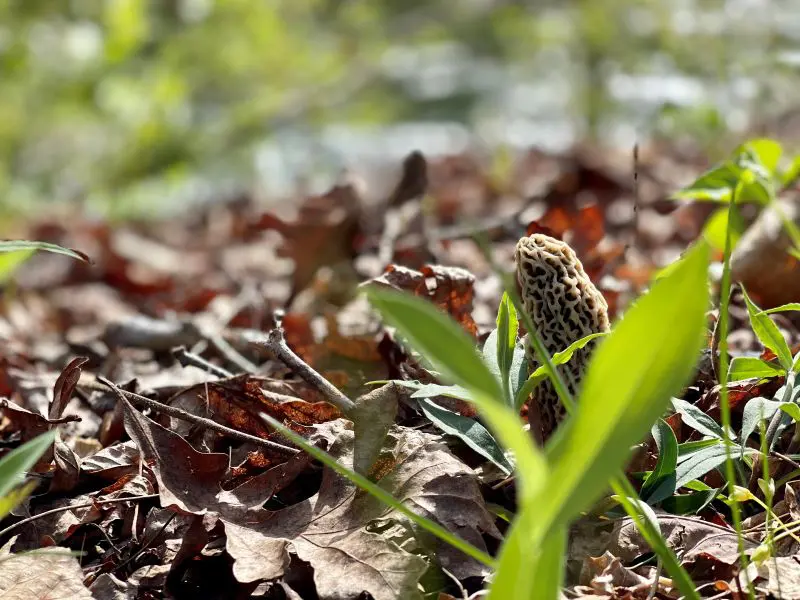Turkey hunters, foragers, and foodies alike consider morel mushrooms a springtime treasure. These honeycomb-capped fungi are prized for their rich, earthy flavor and are a favorite among hunters. But morel hunting isn’t just about the harvest; it’s about the adventure of hiking through the woods in search of nature’s delicacy.
One of my favorite memories of finding morels was a time when I was helping deliver some building materials to a small cabin along the Jacks Fork River in southern Missouri. Since it was spring, I kept my eyes on the passenger-side window during the scenic drive from the main highway to the cabin, hoping to spot a morel or two, maybe even twenty. When we arrived at the cabin, my friend eagerly started unloading the material and was not paying attention to his surroundings. His unawareness led me to discover two morels growing on the side of the wet, river-bottom ground, just feet from the homeowner’s driveway. From that point on, neither my friend nor I could focus on the work we were there to do, only on finding more morels. A few minutes later, we discovered a dozen or more mushrooms growing along the pathways and under a stairway of the cabin. We left that day, feeling like we had gotten a gracious tip for carrying the material.
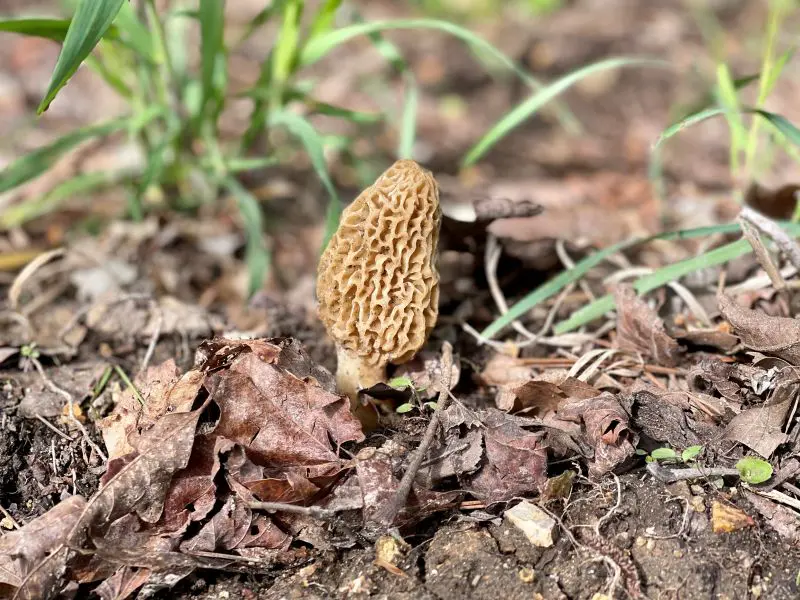
On another encounter with nature’s finest springtime gifts, I was turkey hunting with a family friend’s young son. Ironically, this find also came at a time when I should have been focusing on other obligations besides looking for mushrooms. After turkey hunting all morning in a steep bluff country that had several creeks running through the property, we were bound to another location to try to locate a gobbler before calling it quits for the day. To our surprise, while walking up a steep access road, I was gazing at the leaves along the roadway, again looking for a morel to be staring back at me. Then, we hit the pot of gold at the end of the rainbow. Three mushrooms soon turned into hundreds, poking through the leaves, besides rocks, and alongside logs. Everywhere we looked, there seemed to be more and more. We filled my turkey vest and all our pockets, and the young boys’ family returned two other times to gather as many as possible. If only they were always that abundant and easy to find.
When to Hunt Morels
As with our turkey hunt, timing is everything when it comes to morel hunting. Morels typically appear in the spring, with the season varying by region. In the southern United States, morels may appear as early as March. In the Midwest and Northeast, April and May are prime months. As a general rule, keep an eye on soil temperatures. When they reach around 50°F and the daytime highs are in the 60s and 70s, it’s time to start looking.
After a warm rain, conditions are often ideal, and the mushrooms can appear almost overnight. Watch your local weather and be prepared to head to the woods when temperatures rise and moisture is plentiful. Make sure to return to those areas multiple times.
Where to Find Morels
Morels tend to grow in specific habitats, and knowing what to look for can significantly increase your success. Many seasoned morel hunters have their favorite locations. Here are a few hotspots that I have had success with over the years of hunting, exploring, and other outdoor activities.
- Burn Sites and Logging Areas – Morels commonly appear in recently disturbed ground, especially the spring after a wildfire or timber harvest.
- South-Facing Hillsides – These areas warm up quickly in early spring, making them ideal early-season spots.
- Under Specific Trees – Look near elm, ash, poplar, and sycamore trees, especially if they’re dead or dying.
- Moist Forest Floors – Areas with good leaf litter, filtered sunlight, and plenty of moisture offer perfect morel habitat.
Remember to bring a mesh bag to carry your mushrooms; it helps spread spores as you walk, promoting future growth.
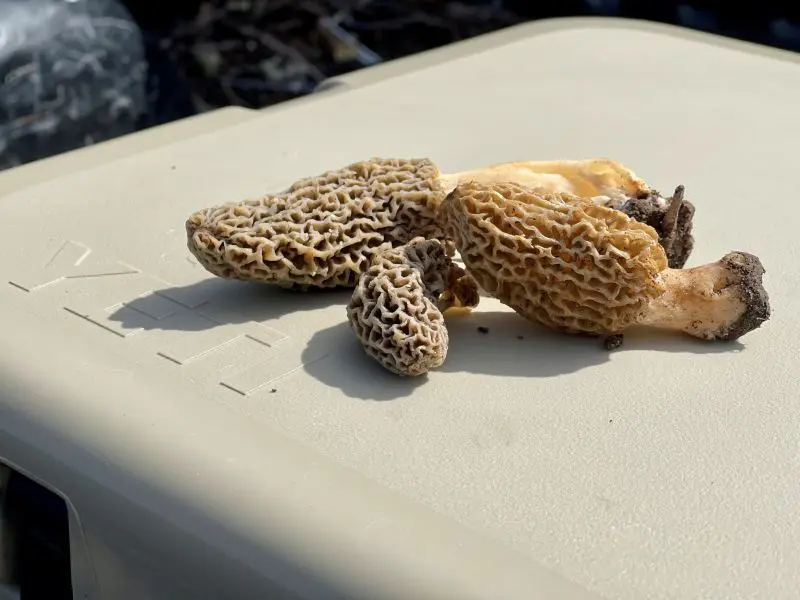
Morel Hunting Ethics and Safety
While morel hunting can be a fun and rewarding spring activity, it’s important to approach it with both ethics and safety in mind. Always be respectful of private property and follow local foraging regulations.
When it comes to safety, never consume a mushroom unless you’re absolutely certain of its identity. Many mushrooms resemble morels but can be toxic, and even true morels can cause illness if eaten raw or in large quantities. Always cook morels thoroughly, and start with a small portion if it’s your first time eating them. When in doubt, consult a field guide or an experienced forager.
Remember, the goal is to enjoy nature and return safely with a few delicious finds in your basket.
- Know Your Mushrooms – Morels are easy to identify, but false morels can be toxic. Learn to distinguish the true morel’s hollow stem and honeycomb-like cap.
- Leave No Trace – Don’t over-harvest or trample habitats. Take only what you need and tread lightly.
- Check Local Regulations – Some public lands limit mushroom harvesting or require a permit. Always follow local rules.
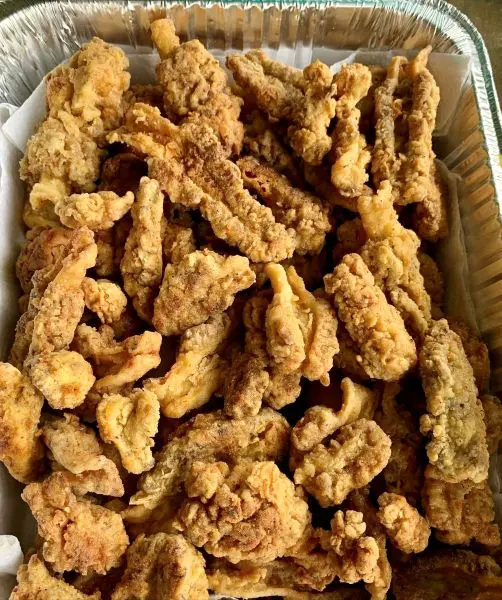
Must-Try Morel Recipes
Deep Fried Morels
A crispy, golden treat that highlights the morel’s natural flavor.
Ingredients
- 2 cups fresh morels, cleaned and halved lengthwise
- 1 cup buttermilk
- 1 cup all-purpose flour
- 1 tsp garlic powder
- 1 tsp paprika
- Salt and pepper to taste
- Vegetable oil for frying
Instructions
- Soak morels in salt water for 30 minutes to remove grit and insects, then rinse and pat dry.
- Soak clean morels in buttermilk for 15 minutes.
- Mix flour, garlic powder, paprika, salt, and pepper in a bowl.
- Heat the oil to 350°F in a cast-iron skillet or deep fryer.
- Dredge the soaked morels in the flour mixture and carefully place them in hot oil.
- Fry until golden brown (about 3–4 minutes), flipping once.
- Drain on paper towels and serve hot.
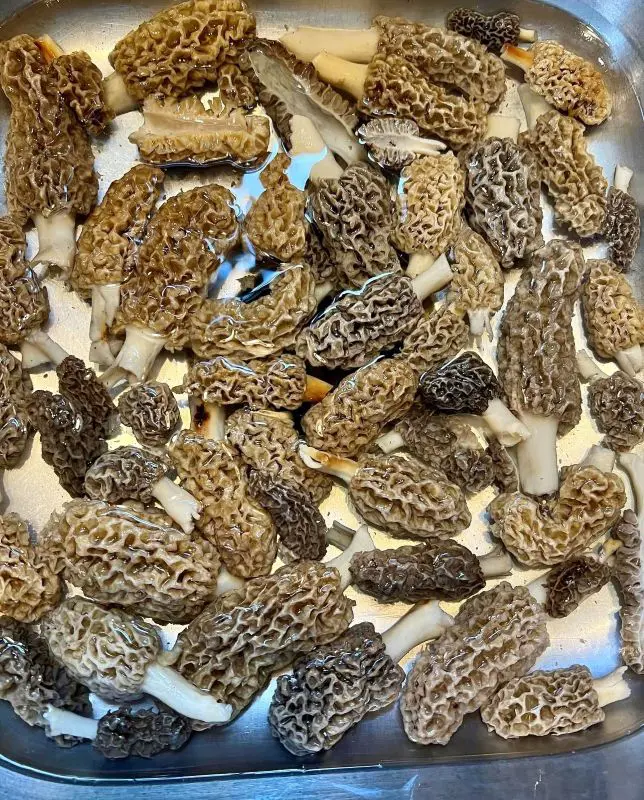
Creamy Morel Pasta
A rich, comforting dish perfect for showcasing your foraged mushrooms.
Ingredients
- 1 cup fresh morels, cleaned and sliced
- 2 tbsp butter
- 2 cloves garlic, minced
- 1 shallot, finely chopped
- 1/2 cup white wine (optional)
- 1 cup heavy cream
- 1/4 cup grated Parmesan cheese
- Salt and pepper to taste
- 8 oz pasta (fettuccine or tagliatelle work well)
- Fresh parsley, chopped (for garnish)
Instructions
- Cook the pasta according to the package instructions and set it aside.
- In a skillet, melt butter over medium heat. Add garlic and shallot; sauté for 2–3 minutes.
- Add sliced morels and cook until tender, about 5 minutes.
- Deglaze with white wine, if using, and reduce the liquid by half.
- Pour in heavy cream and simmer for 5–7 minutes until slightly thickened.
- Stir in Parmesan cheese, season with salt and pepper, and add the cooked pasta.
- Toss to coat and serve hot, garnished with fresh parsley.
Morel hunting is part science, part art, and all adventure. Whether you’re a seasoned forager, a curious beginner, or a turkey hunter who likes to pair deep-fried turkey breast with a basket full of delicious fried morels, springtime in the woods offers the perfect opportunity to connect with nature and gather something truly special. With the right timing, a sharp eye, and a good recipe, you’ll find that morels are worth every step of the hunt.

